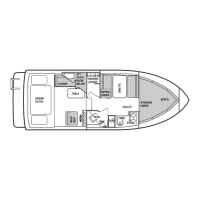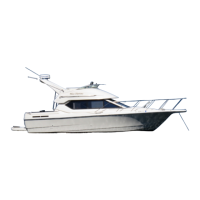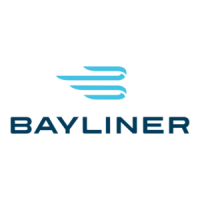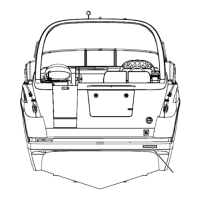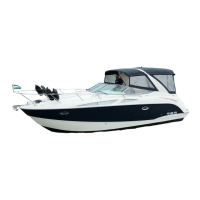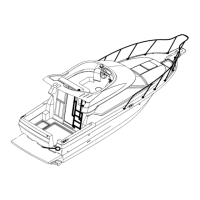Do you have a question about the Bayliner 285 Cruiser and is the answer not in the manual?
Details the location and importance of the Hull Identification Number (HIN) for your boat.
Contains important disclaimers, liability information, and Bayliner's proprietary rights.
Explains the meaning of DANGER, WARNING, CAUTION, and NOTICE boxes and their symbols.
Provides details on dealer service, warranty, and obtaining support.
Offers advice on gaining boating experience and recommended safety classes.
Highlights essential safety standards, including propeller and CO hazards.
Guidance on qualified maintenance and special care for boats in storage.
Information on engine/accessory guidelines, propeller, and boat dimensions.
Crucial safety instructions for lifting the boat properly.
Details CO hazards, facts, accumulation, prevention, and monitoring.
Illustrates exterior features, deck layout, and helm station components.
Details interior spaces and important warning labels found throughout the boat.
Locates key components for electrical, bilge, freshwater, fuel, and waste systems.
Covers engine guidelines and the critical function of the bilge blower system.
Information on the fuel system and the location of the fire extinguisher port.
Details on steering, shift/throttle, trim tabs, and bow thruster controls.
Information on gauge cleaning, fogging, interference, and fuel gauge behavior.
Guidelines and warnings for using the depth finder and VHF radio.
Warnings and notices regarding the use and accuracy of the GPS system.
Operation and maintenance of bilge pumps, sump pumps, and drain systems.
Covers seawater systems, freshwater systems, and their components.
Information on the water heater, its winterization, and post-winterizing setup.
Details on marine heads, holding tanks, macerators, and cleaning tips.
Instructions for using cleats, bow/stern eyes, and the anchor windlass.
Provides guidance on cleaning and maintaining boat canvas and clear vinyl.
Safety and operational guidelines for the alcohol/electric stove and refrigerator.
Information regarding audio equipment, including potential radio reception issues.
Covers care for interior/exterior lights, spotlights, and general maintenance.
Importance and proper use of navigation lights for safety.
Details the 12V DC system, batteries, and battery switch operations.
Covers fuses, circuit breakers, accessory outlets, alternator, and charger.
Information on 110V AC systems, shore power connection, and generator use.
Provides detailed wiring diagrams and harness schematics for the boat's electrical system.
Fields to record the selling dealer's contact and service details.
Spaces to record engine, serial number, and propeller specifications.
Fields for recording ignition, electronics manufacturer, and serial numbers.
Sections to detail the boat's description and the operator's information.
Details trip plans, expected stops, and survival equipment checklist.
